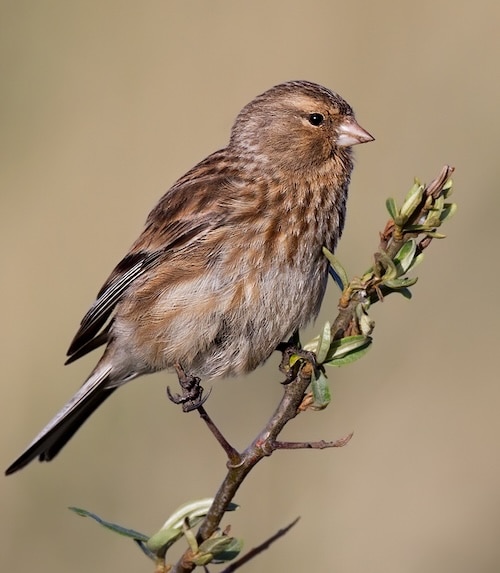Turkmenistan

Turkmenistan is a country in Central Asia bordered by Kazakhstan to the northwest, Uzbekistan to the north, east and northeast, Afghanistan to the southeast, Iran to the south and southwest and the Caspian Sea to the west. Ashgabat is the capital and largest city with almost one million residents. It is one of the six independent Turkic states. With a population of around 7.5 million people, Turkmenistan is the 35th most-populous country in Asia and has the lowest population of the Central Asian republics while being one of the most sparsely populated nations on the Asian continent. It has long been a thoroughfare for empires and cultures. Merv is one of the oldest oasis-cities in Central Asia and was once among the biggest cities in the world. It was also one of the great cities of the Islamic world and an important stop on the Silk Road. Other major cities include Aşgabat, Türkmenbaşy (formerly Krasnovodsk), Balkanabat, Daşoguz, Türkmenabat, and Mary.
The country has the world’s fifth largest reserves of natural gas, but over 80% of the country is covered by the Karakum Desert. The centre of the country is dominated by the Turan Depression and the Karakum Desert. Topographically, Turkmenistan is bounded by the Ustyurt Plateau to the north, the Kopet Dag Range to the south, the Paropamyz Plateau, the Koytendag Range to the east, the Amu Darya Valley, and the Caspian Sea to the west. The Kopet Dag Range, along the southwestern border with Iran, reaches 9,554 feet at Kuh-e Rizeh (Mount Rizeh). The Great Balkhan Range in the west of the country and the Köýtendag Range on the southeastern border with Uzbekistan are the only other significant elevations. The Great Balkhan Range rises to 6,170 feet at Mount Arlan and the highest summit in Turkmenistan is Ayrybaba in the Kugitangtau Range at 10,292 feet.

Karakum Desert -©Kamran502 CC BY-SA 4.0 via Wikimedia Commons
Major rivers include the Amu Darya, the Murghab River, the Tejen River, and the Atrek (Etrek) River. Tributaries of the Atrek include the Sumbar River and Chandyr River. The Turkmen shore along the Caspian Sea is 1,748 kilometres long. The Caspian Sea is entirely landlocked, with no natural access to the ocean, although the Volga–Don Canal allows shipping access to and from the Black Sea.
Turkmenistan is in a temperate desert zone with a dry continental climate. Remote from the open sea, with mountain ranges to the south and southeast, Turkmenistan’s climate is characterised by low precipitation, low cloudiness, and high evaporation. Absence of mountains to the north allows cold Arctic air to penetrate southward to the southerly mountain ranges, which in turn block warm, moist air from the Indian Ocean. Limited winter and spring rains are attributable to moist air from the west, originating in the Atlantic Ocean and Mediterranean Sea. Winters are mild and dry, with most precipitation falling between January and May. The Kopet Dag Range receives the highest level of precipitation.

Amu Darya River – ©joepyrek CC BY-SA 2.0 via Wikimedia Commons
The Karakum Desert is one of the driest deserts in the world; some places have an average annual precipitation of less than half an inch of rain. The highest temperature recorded was just under 52 °C, at Kerki, an extreme inland city located on the banks of the Amu Darya river. Turkmenistan enjoys 235–240 sunny days per year.
Virtually all field crops are irrigated due to the aridity of the climate. The top crop in terms of area planted is wheat (761 thousand hectares), followed by cotton (551 thousand hectares) as the country is the world’s tenth-largest cotton producer of cotton.
Birding Turkmenistan
Turkmenistan contains seven terrestrial eco-regions: Alai-Western Tian Shan steppe, Kopet Dag woodlands and forest steppe, Badghyz and Karabil semi-desert, Caspian lowland desert, Central Asian riparian woodlands, Central Asian southern desert, and Kopet Dag semi-desert.
The desert sees limited plant growth in the winter, with grasses and xeric plants and shrubs sprouting, and with the arrival of spring, the rains encourage the growth and flowering of ephemeral plants. The mountains in the south of the country are covered in shrublike and juniper woodlands, and larger trees grow in the gullies and river valleys.
Nevertheless, a wide range of animals are found in Turkmenistan, including 91 species of mammal, 82 species of reptile and nearly 400 species of bird. A number of nature reserves and sanctuaries have been created for the preservation of the natural landscapes and the conservation of the wildlife.
Over 2,000 species of vascular plant have been recorded in Turkmenistan including 462 relic and endemic species. The greatest diversity is in the mountains of the south, with many economically important fruit-bearing trees being found there, including persimmon, almond, cherry, pomegranate and fig. Much of the rest of the country makes up the Central Asian Southern Desert ecoregion, which includes the Karakum Desert, the southern part of the Kyzylkum Desert and other areas with rolling dunes, sandy plateaus and alluvial plains. This area receives practically no rain during the summer and the extreme heat means that little grows at this time of year. The coastal strip consists of sand and clay salt deserts recently exposed by the retreating shoreline. It has unconsolidated dunes and is sparsely vegetated with salt-loving plants. This area, with its milder climate and the mists that sometimes roll in from the Caspian Sea.
The range of habitats support a 91 species of mammal, some of which are threatened. There are bats in the caves, lynx, leopards, bears, mountain sheep, wild ass and goitered gazelles in the mountains, and seals in the Caspian Sea. In the deserts are long-eared hedgehog, Brandt’s hedgehog and tolai hare, as well as gerbils, jerboas and other rodents. Reptiles are plentiful and include the desert monitor, European pond turtle, Caspian turtle, Russian tortoise, dice snake and Transcaspian saw-scaled viper. There are also skinks, geckoes, agamas, wall lizards, the European legless lizard, vipers, rat snakes and the blind wormsnake. Amphibians are much scarcer.

Sarygamysh Lake – ©Chainbreaker CC BY-SA 4.0 via Wikimedia Commons
Many of the birds are resident species but others are migratory and just passing through, while still others overwinter. Some Ducks, geese, and swans inhabit the shores of the Caspian at this time of year. The largest lake in the country is Sarygamysh Lake, on the border with Uzbekistan; this is now a nature reserve and attracts wildfowl including pelicans, coots and cormorants. Yeroylanduz is a 300 square kilometres natural depression which floods each year and attracts pelicans, flamingos and other water-loving birds.
There are a number of nature reserves: Badhyz State Nature Reserve is a sanctuary for the Turkmen kulan, and Repetek Biosphere State Reserve preserves the desert flora and fauna. Another desert reserve, the Bereketli Garagum Nature Reserve is designed to preserve the unique ecological system and natural resources of the Karakum Desert. Köýtendag Nature Reserve, Köpetdag Nature Reserve and Gaplaňgyr Nature Reserve are all mountain reserves in different parts of the country. Although these reserves contribute to the conservation of the wildlife, they sometimes lack effective management, and poaching and habitat destruction are still occurring.
Turkmenistan birds include Crested Lark, Chukar Partridge, Common Pheasant, Rock dove and both European and Oriental Turtle Dove. Birds of prey include Eurasian Sparrowhawk, Shikra, Long-legged Buzzard, Black Kite and Common Kestrel. Passerine birds frequently encountered include a range of tits, flycatchers, nightingales, finches, buntings, warblers and shrikes. One of the most sought-after, and hardest to see, is the enigmatic Zarudny’s (Asian Desert) Sparrow.
-
Wikipedia
GNU Free Documentation License
https://en.wikipedia.org/wiki/Turkmenistan
-
Number of bird species: 439
(As at January 2025)National Bird: Black Francolin Francolinus francolinus
-
Avibase
PDF ChecklistThis checklist includes all bird species found in Turkmenistan , based on the best information available at this time. It is based on a wide variety of sources that I collated over many years. I am pleased to offer these checklists as a service to birdwatchers. If you find any error, please do not hesitate to report them. -
Oriental Bird Club
Annotated ChecklistAn annotated checklist of the birds of Turkmenistan -
Wikipedia
Annotated ListThis is a list of the bird species recorded in Turkmenistan. The avifauna of Turkmenistan include a total of 438 species. -
eBird
PDF ChecklistThis checklist is generated with data from eBird (ebird.org), a global database of bird sightings from birders like you. If you enjoy this checklist, please consider contributing your sightings to eBird. It is 100% free to take part, and your observations will help support birders, researchers, and conservationists worldwide.
-
Birds of Central Asia
(Kazakhstan, Turkmenistan, Uzbekistan, Kyrgyzstan, Tajikistan & Afghanistan) | By Raffael Ayé, Manuel Schweizer & Tobias Roth | Christopher Helm | 2012 | Paperback | 336 pages, 141 plates with colour illustrations; 14 colour photos, 5 b/w illustrations, 3 colour maps, colour distribution maps | ISBN: 9780713670387 Buy this book from NHBS.com
-
Nature Preserving Society of Turkmenistan
WebpageThe Civil Society organization “Nature Preserving Society of Turkmenistan” (NPST) was founded at its founding meeting in 1968 in Ashgabat, and represents a significant force in supporting government programs that are aimed at building a democratic state, where everyone should have the right to a favorable environment.
-
Hazar State Natural Reserve
InformationSatellite ViewIt is located on the south-east coast of the Caspian Sea, in Balkan Province and covers an area of 2,690 km². Ogurjaly Sanctuary is part of this nature reserve. -
Protected areas of Turkmenistan
InformationSatellite ViewInteractive list
-
eBird
SightingseBirding This Month
-
BirdQuest
Tour OperatorMagical spring birding in Kazakhstan, Uzbekistan and Turkmenistan... -
Miksture
Tour OperatorWelcome to desert and mountain birding in Turkmenistan - Central Asian birding when it is best! -
Rubythroat Birding Tours
Tour OperatorTurkmenistan is home to a diverse range of wildlife, including various bird species that attract birdwatchers worldwide. The main reason to visit Turkmenistan is to find the Zarudniy Sparrow, a rare and unique bird found only in this region.
-
2019 [05 May] - Mark Van Beirs
PDF ReportOur Central Asia tour started with a big bang as on the Turkmenistan pre-trip we managed to observe the rare and truly enigmatic Zarudny’s (or Asian Desert) Sparrow, one of hardest to see birds in the Palearctic!
-
Unique ornithological reserve near Turkmen coast of Caspian Sea
ArticleHazar State Natural Reserve can be called ornithological because its main goal is to preserve habitats of waterfowl and waterbirds, the State Committee for Environmental Protection and Land Resources of Turkmenistan said in a message.

